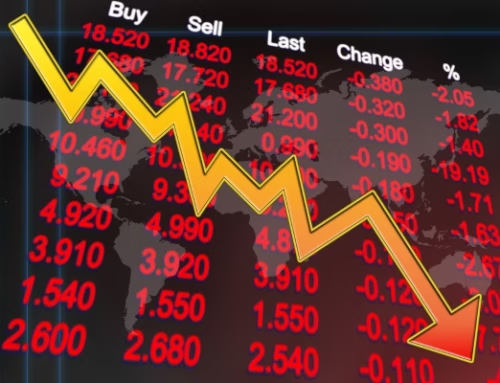There is a pattern that we see recurring throughout history, when a successful empire expands its borders so far that it becomes the biggest kid on the block. When survival is no longer at stake, selfish elites and other special interest groups capture the political agenda. The spirit that “we are all in the same boat” disappears and is replaced by a “winner take all” mentality. As the elites enrich themselves, the rest of the population is increasingly impoverished. Rampant inequality of wealth further corrodes cooperation. Rome was not so much conquered by “barbarians” as it committed societal suicide, when the glue that held it together, the cooperation of all factions, simply disappeared.
The breakdown of social order: Those institutions to which men had given allegiance throughout history, such as the family, the church, the guild, the fraternal order, and similar voluntary institutions, had faded in importance in the twentieth century. This left only the isolated individual and the modern nation-state. Men gained a sense of belonging through their participation in mass-movement politics. Political leaders began to attract individuals who were isolated, even though they were living in large cities. These leaders were able to offer a sense of brotherhood to millions of people who felt alone in the midst of cities. The modern political state functioned as a substitute for the family, church, and voluntary associations that for millennia had given people a sense of purpose and participation. So, the push toward socialism was born out of radical individualism, institutionally speaking, even though as a philosophy, socialism is completely opposed to individualism.
When the nation’s history is poorly taught in schools, ignored by the young, and proudly rejected by qualified leaders, awareness of tradition consists only in wanting to destroy it.
As a country, we are on a journey and the 2020s are setting up as a stressful, tumultuous period.
“People and politicians are now at each other’s throats to a degree greater than at any time in my 71 years… How the U.S. handles its disorder will have profound implications for Americans, others around the world, and most economies and markets.”
– Ray Dalio,
Co-Chairman & Co-Chief Investment Officer,
Bridgewater Associates
Ray continued……
There are three problems that are coming together, so it’s important to understand them individually and how they collectively make a bigger problem. There is a money and credit cycle problem (Fed) a wealth and values gap problem, and an emerging great power (China) challenging the existing dominant power problem. The world is going to change in the next five years in shocking ways in relation to the three big issues we have been talking about.
Tax Planning Before Year End
Any low-cost basis stock or real estate? If so, you have 6 weeks for Long Term Capital Gains tax at 15% before it goes up next year. Check with your tax advisor, you may benefit by selling low cost basis stock or real estate, pay the capital gains at 15% and establish a higher basis.
- Roth Conversion this year before year end 2020. Make sure to stay on track for using this year to convert another chunk of your IRA to Roth. Make sure to not raise your tax bracket by doing so.
- The SECURE Act eliminated the stretch IRA. The estate tax exemption and lifetime gift exclusion could be substantially reduced next year, and the step-up basis may be eliminated, which could hit heirs with substantial capital gains taxes. Annual gifting and split gifting could be more important than ever. To help maximize inheritance and minimize potential estate tax concerns, review gifting strategies and beneficiary designations. High-net-worth clients may want to consider leveraging the lifetime gift exemption to reduce their taxable estate. If both parents and grandparents are wealthy, consider transfers to grandchildren in anticipation of changes to the generation-skipping tax.
US Economy
- Pending home sales came off the highs but are still nearly 20% above last year’s levels.
- Total existing-home sales will probably moderate as well.
- CoreLogic still expects home price appreciation to slow next year.
- Residential vacancies climbed sharply across large cities as demand dwindles
- Rental weakness has been more pronounced for higher-end residential properties.
- The Chicago PMI index (regional business activity) also retreated from the highs.
- Small businesses remain under pressure due to the pandemic.
- This year’s US budget gap far exceeded the levels we see in the Eurozone, which in part explains the US economic outperformance (much larger fiscal stimulus).
- Growth in the nation’s factory activity eased a bit in November.
- The ISM new orders index remains near multi-year highs. And export orders accelerated.
- One area of concern is a pullback in hiring. The employment PMI index has moved below 50 (contraction).
- Going forward, factory activity is expected to strengthen further.
- US automobile sales lost some momentum in November.
- Online sales have been robust.
- The divergence between residential and nonresidential construction spending continues to widen. It’s partially a reflection of the pandemic shift to a “home office”
- Many small businesses are struggling.
- Business closures in November:

- The Paychex/IHS Markit Small Business Employment Index:

- Risks of closing for good:

- The November employment report was a stark reminder that the nation’s labor market recovery has a long way to go. The headline payrolls figure was well below market expectations.

- And this chart shows a comparison to previous downturns.

COVID Update
US COVID-related hospitalizations exceeded 100k for the first time.

Many nursing homes are getting hit.

Vaccine costs:


US Job Payrolls
- Overall payrolls grew only 245,000 last month as the private sector added 344,000. The difference is a result of the government shedding temporary census workers.
- The unemployment rate ticked down to 6.7%, but for the wrong reasons as some 400,000 left the labor force.
- Hourly and weekly earnings look strong, but this may be because hiring is slower in the lower-paid service occupations.
- Average duration of unemployment rose to 23.2 weeks.
- Initial jobless claims declined last week, but we still saw a million Americans file for unemployment benefits
- Online activity related to searching for a job has deteriorated.

- Construction and manufacturing, which have been among the strongest segments, lost some momentum. Transport and warehousing gains likely reflect e-commerce growth.
- The unemployment report has been showing a spike in wages. That’s a distortion due to disproportionally high layoffs among low-wage workers, making the average salary artificially high. The employment cost index provides a more accurate picture.
This weaker-than-expected job report should give Congress more reason to pass another relief bill soon. It will not stimulate any new growth but is needed to fill holes and buy time.
The New Normal
Here is the problem. There is currently much hope that following the pandemic, the world will experience an explosion of growth. The issue is the “Old Normal,” wasn’t all that great for the bottom 80% of the population.
The lockdowns accelerated the “work-from-home” mentality for many companies and employees. That trend will not reverse quickly, if ever.
Corporations are now seeing the benefit of reduced labor forces, less office space, and increased productivity through technology. All of these are significant “cost-savings” to the corporation’s bottom lines.
The consumer also will likely continue to do more things online. While travel will likely increase, it may be quite some time to see airlines, hotels, and rental car companies back to previous capacities. As Bloomberg noted in “Get Ready For The New Normal 2.0:”
“The U.S. economy post-Covid-19 will look a lot like the one that struggled to recover from the 2008-09 financial crisis –- only in some ways worse.”
Growth will be disappointingly tepid after an initial rebound and, for a time at least, inflation dangerously lower and unemployment heartbreakingly higher than they were back then. Government debt -– and the Federal Reserve’s balance sheet -– will be much bigger, while interest rates stay low.
In 1998, the Federal Reserve “crossed the ‘Rubicon,’ whereby lowering interest rates failed to stimulate economic growth or inflation as the ‘debt burden’ detracted from it. When compared to the total debt of the economy, monetary velocity shows the problem facing the Fed.

Following the Financial Crisis, the massive expansion of debt, deficits, and continues Federal Reserve interventions led to collapsing monetary velocity rates and retardation of economic growth. Before 2008, the long-term growth trend of the real economy was 3.2%. That collapsed to 2.2% as debt exploded.

The “New-New Normal” would consist of even more massive debts, deficits, and Federal Reserve monetization, with sustained interest rates near zero. This will see the trend of economic growth step down again to below 2%.

Even with a vaccine, an even slower economic growth rate has substantial consequences on employment and the wealth gap.
Companies’ fast adoption of technology—think robotics—along with increased productivity and change in demand, will further retard employment in the New-New Normal.
To generate economic growth and prosperity, full-time employment is critical. After the Financial Crisis, the number of full-time jobs relative to the population collapsed and only recovered about half of what was lost. We witnessed the same following the dot.com crash. It is highly likely that full-time employment will take another drop down as weaker demand requires fewer full-time staff.

Furthermore, participation in the labor force has dropped to levels not seen since 1973 and is a crucial measure to watch. Since the Financial Crisis, the participation in the Labor Force never significantly rose despite record low unemployment rates. This is because the labor force was shrinking sharply over the last decade as more and more participants were no longer counted.

Those “Not In Labor Force” are individuals that are considered out of the labor force and no longer seeking employment. Do you believe that nearly 50% of the working-age population are no longer looking for work?

Such is the “New, New Normal.”
The structural transformation over this past year and the last decade has permanently changed the economy’s financial underpinnings as a whole. This would suggest the current state of slow economic growth is the new normal. As such, interest rates will remain stuck near the zero-bound as we continue to struggle with the myriad of problems plaguing growth.
- A low savings rate for 80% of Americans
- An aging demographic
- A heavily indebted economy
- A decline in exports
- Slowing domestic economic growth rates.
- An underemployed younger demographic.
- An inelastic supply-demand curve
- Weak industrial production
- Dependence on productivity increases
The essential factors remain demographics and interest rates. As the aging population grows, they will become a net drag on savings. This increases the dependency on the social welfare net, which will continue to expand over time.

“Demography, however, is destiny for entitlements, so arithmetic will do the meddling.” – George Will
The end game of three decades of excess is upon us, and we can’t deny the weight of the debt imbalances currently in play. The medicine the Federal Reserve is prescribing is a treatment for the common cold; in this case, a typical business cycle recession.
The outcome of those policies, while unintended, is destroying the bottom 90% of the population who suffer from “debt cancer.” Trying to solve a debt problem with more debt is akin to giving a patient pain medication. While such a prescription may temporarily mask the “pain,” it is not a “cure.”
If it were, then why would a rising percentage of Americans support the idea of socialism?
But that is what we face in the “New, New Normal.”
The Federal Reserve Bank of the United States
The Fed has pursued the wrong policies over the past three decades, which have caused ever higher debt and ever greater instability in the financial system. Central banks have no way out but to keep doing what they are doing, but by doing that, they are making it all worse.
- Governments have relied on monetary policy starting in 1987, with Alan Greenspan as Chairman of the Board of Governors at the Federal Reserve. It became the instrument of choice for all kinds of crises.
- But monetary policy has become increasingly ineffective in promoting real economic growth. Every crisis was met with monetary easing that caused debt and other imbalances to accumulate over time, and that caused the next crisis to be bigger than the previous one. The next crisis then needed more of a punch from central banks. However, since interest rates were never raised as much in upturns as they were lowered in downturns, the capacity to deliver that punch was decreasing.
- It’s true, the Fed had no choice but to step in to prevent a financial meltdown (in March 2020). But this meltdown only happened because of the monetary policy instituted over previous years.
- You see, by keeping interest rates too low as a means of stimulating economic growth, central banks are inducing corporations and households to take on more debt.
- To a large extent, this debt is not used for productive investments, but for consumption or, especially in the U.S., for the buyback of shares.
- This creates a debt trap, as well as increasing instabilities in the financial system. These instabilities broke out in March, and the Fed responded adeptly to stop the panic. But the point is: Central banks create the instabilities, then they have to save the system during the crisis, and by doing so they create even more instabilities. They keep shooting themselves in the foot.
- Governments should use the current environment to borrow long and lock in cheap money while they can.
- This is not the time for austerity due to the pandemic crisis, but governments should set clear guidelines about how they intend to get debt levels down in the future. They should reevaluate budgets and use of funds, e.g., cut subsidies that often go to special interest groups that don’t deserve them.
Central banks have run out of firepower, and that the side effects are getting worse.
In theory, there are four ways to get rid of an overhang of bad debt. They are as follows:
- Households, corporations, and governments try to save more to repay their debt. But we know that this gets you into the Keynesian Paradox of Thrift, where the economy collapses. So, this way leads to disaster.
- You can try to grow your way out of a debt overhang, through stronger real economic growth. But we know that a debt overhang impedes real economic growth. Of course, we should try to increase potential growth through structural reforms, but this is unlikely to be the silver bullet that saves us.
- This leaves the two remaining ways: Higher nominal growth – i.e., higher inflation – or
- Get rid of the bad debt by restructuring and writing it off.
I personally believe we will use a combination of #3 and #4.
A few final thoughts:
- We are dealing with a complex adaptive system, full of tipping points, and we should not assume that we can understand and control it.
- On the one hand, in depressed circumstances, it might prove impossible to raise inflation.
- On the other hand, given enough fears of fiscal dominance, you might get a lot more inflation than you bargained for.
False beliefs:
- The idea that price stability is sufficient for economic stability? Wrong.
- That easy money always stimulates demand? Wrong.
- That the economy is self-adjusting, and will automatically go back to a full employment equilibrium? Wrong.
- That financial markets are perfectly efficient and bad things can’t happen? Wrong.
- That wealth will trickle down to all levels of society? Wrong.
These are big beliefs. And false beliefs are dangerous. You know the saying attributed to Mark Twain: ‘It ain’t the things that you don’t know that get you, it’s the things that you know for sure, that ain’t so!’” Never forget: We think we know much more than we really do.
All content is the opinion of Brian J. Decker





